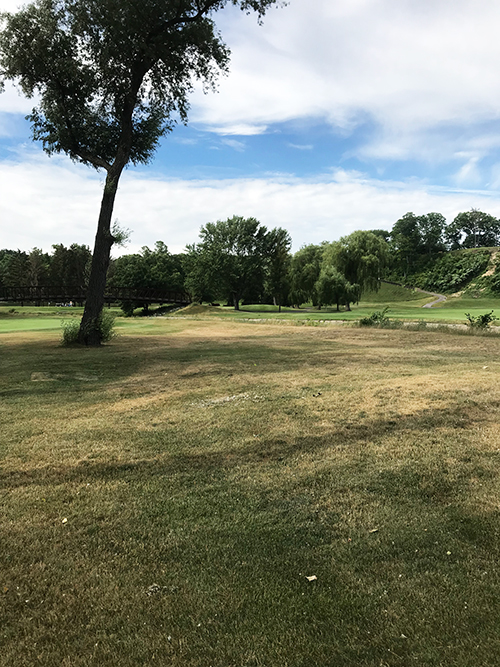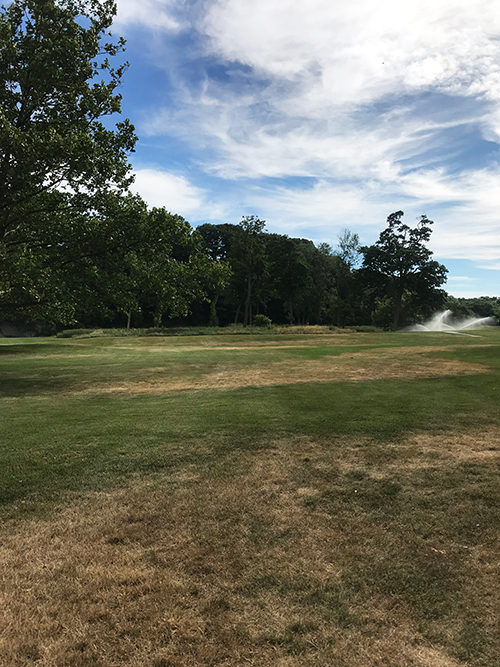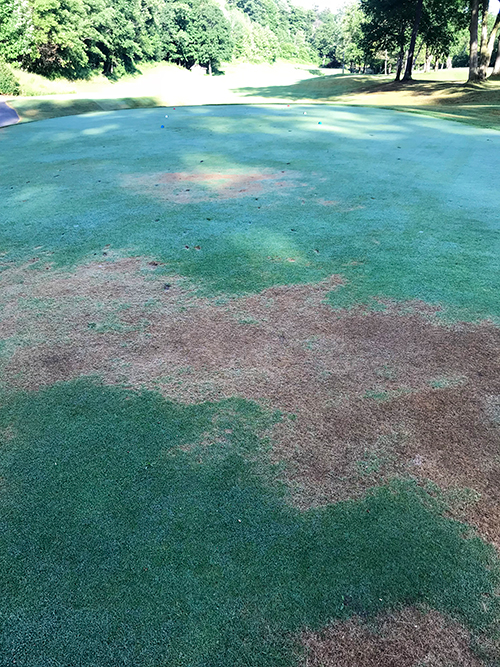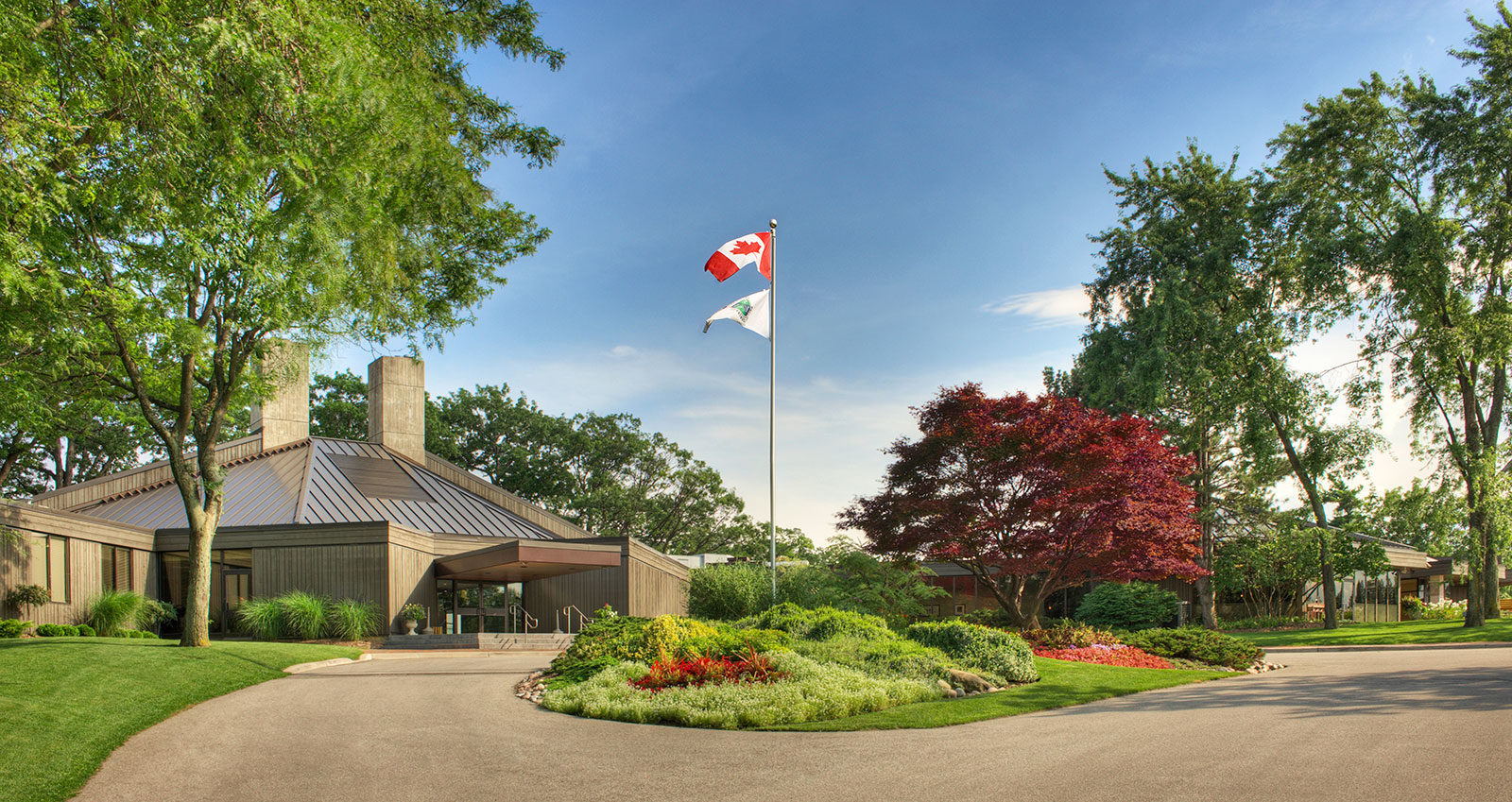It’s hard to believe that the month of June is nearly behind us! Although the golf season got off to a slow start, the last two months have provided some great weather. With great weather, comes little rain, which has certainly been the case this spring. When it comes to managing the golf course, drier is certainly more desirable than wet, as we can better manage our moisture levels providing better playing conditions. Also, drier turf and soil is less susceptible to disease pressure therefore requiring less pest control inputs.
Periods of drought do an excellent job illustrating to us the coverage, efficiency and importance of our irrigation system. It’s hard to believe, but in the absence of rainfall an improperly functioning irrigation head can show itself by wilted surrounding turf in less than a day.
It also becomes very clear which areas of our golf course receive no irrigation coverage at all! Over the past couple of weeks if you happen to play in the morning you may have noticed staff running additional portable sprinklers as well as hand watering areas to help prevent the turf from going completely dormant. As you may expect, all efforts are focused on areas immediately surrounding greens, tees and fairways before we venture further out into areas receiving less play. With the forecasted rain this weekend, I’m sure turf managers and avid gardeners will be breathing a collective sigh of relief.
How dry is dry?
| Month | Actual Rainfall (mm) | Average Rainfall (mm) |
| May | 52 | 67 |
| June (as of the 22nd) | 14 | 68 |

Examples of areas with no irrigation coverage (above and below)


14, 15 and 16 tees (16 tee pictured above) were built from nearly straight sand. Sand based root zones hold very little moisture, making it nearly impossible to maintain sufficient moisture levels during periods of heat and drought stress. Although these areas may appear to be dead, ample hand watering and patience will nurse the turf back to health.

